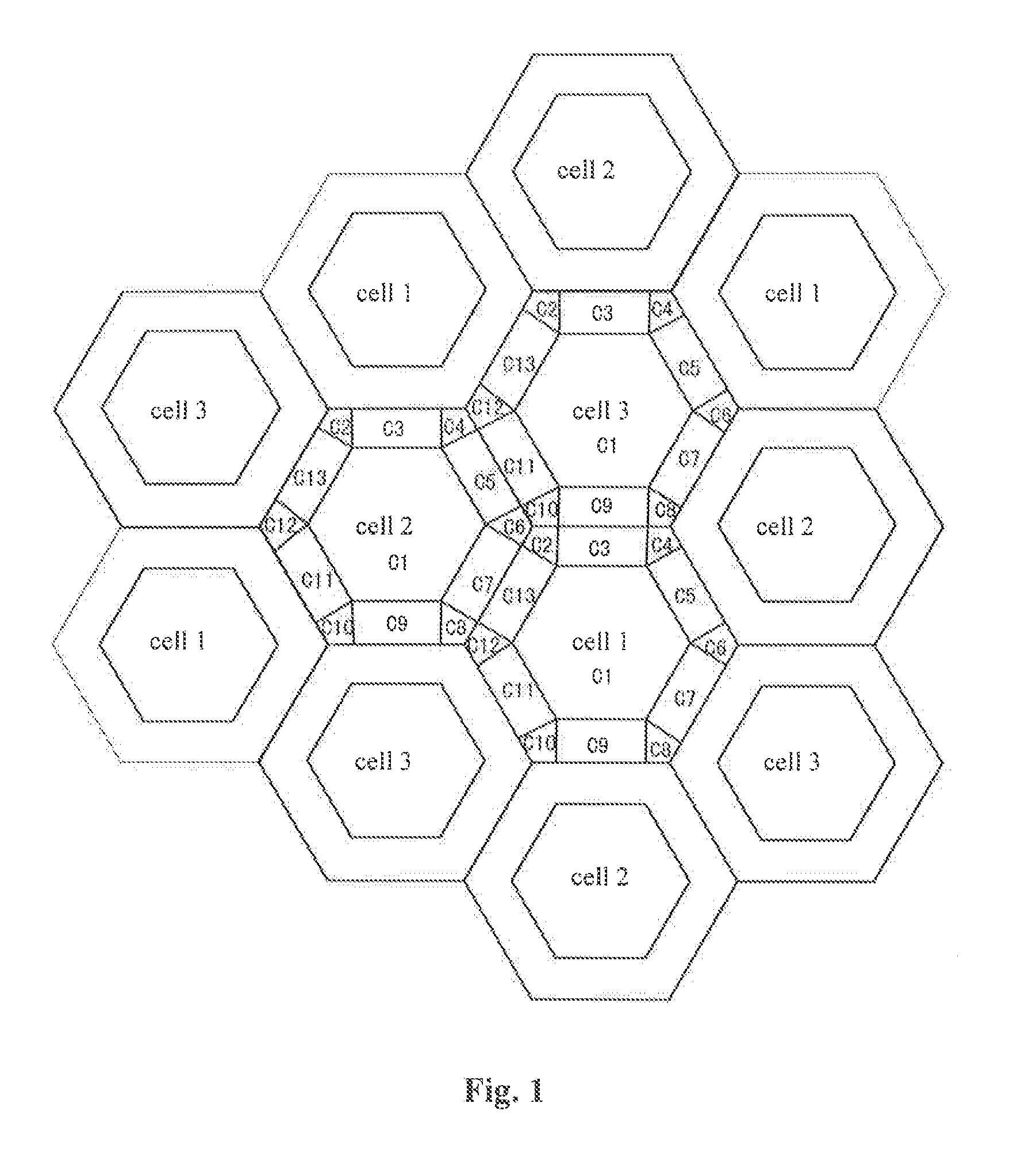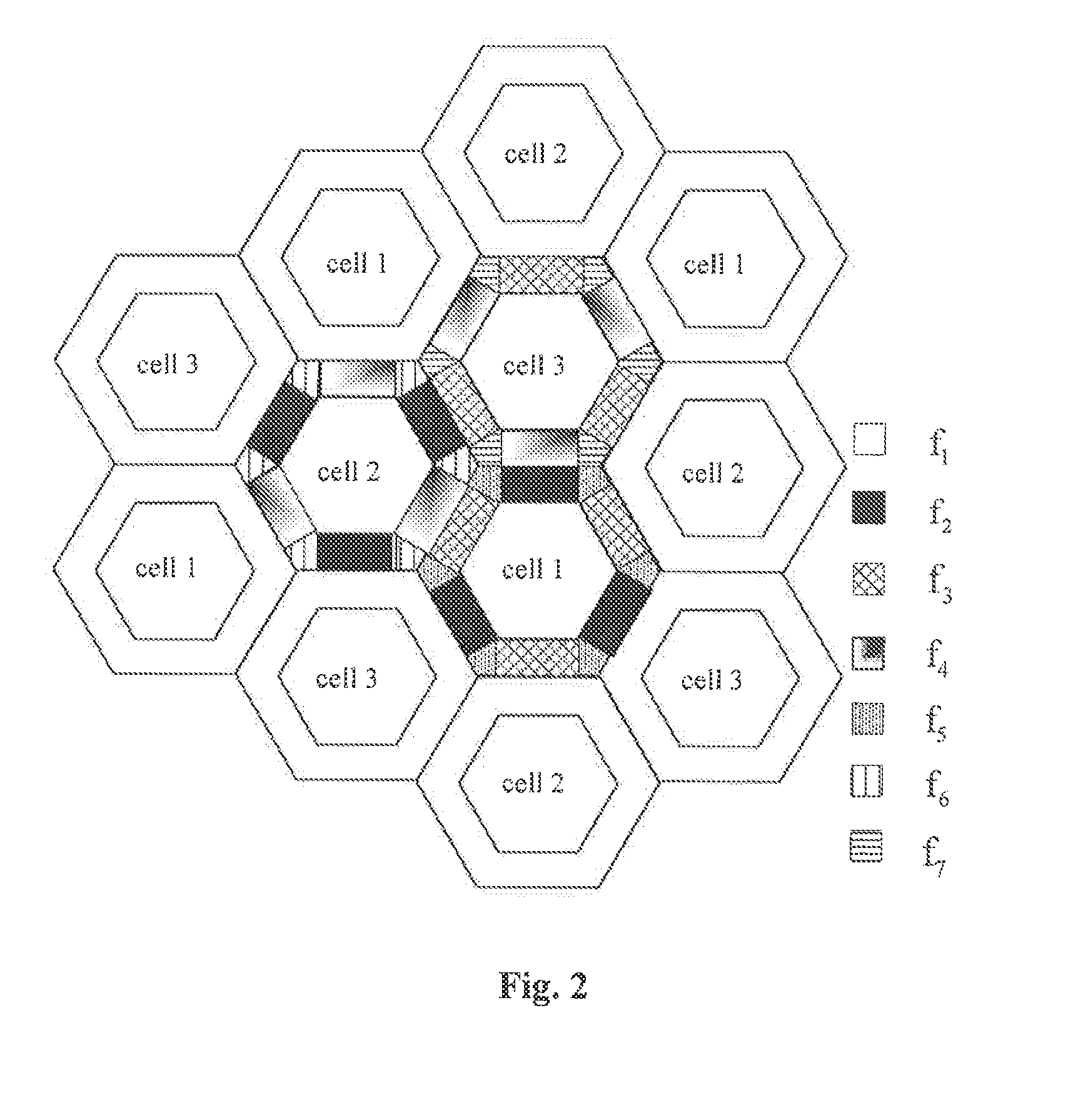Method for frequency reuse in cellular network
a frequency reuse and cellular network technology, applied in the field of wireless communication, can solve the problems of slow down of sfr performance, serious co-channel interference at the edge of cells, and still exist interference among edge channels of cells, so as to improve system performance, improve system efficiency, and effectively suppress interference among cells
- Summary
- Abstract
- Description
- Claims
- Application Information
AI Technical Summary
Benefits of technology
Problems solved by technology
Method used
Image
Examples
embodiment 1
[0032]In the present embodiment, the method for frequency reuse according to the present invention is used in an OFDMA cellular network. By using the method for frequency reuse, interference among cells is suppressed effectively and the frequency efficiency of the system is improved. Moreover, performance of cell edge users is improved greatly by using frequency reuse.
[0033]In the present invention, the whole OFDMA cellular network is divided into different cell clusters. Each cell cluster has three cells, every two of them being adjacent to each other. Frequency is allocated to any one of the cell clusters according to the method for frequency reuse of the present invention, and then the same method for frequency reuse is applied to all other cell clusters in the network, so that the solution of the frequency allocation of the whole OFDMA cellular network is completed. Specifically, the method comprises the following steps.
[0034]Step 1 As shown in FIG. 1, three cells, every two of ...
embodiment 2
[0042]In the present embodiment, the method for frequency reuse according to the present invention is used in downlink FDD LTE system. By using the method for frequency reuse, interference among cells is suppressed effectively and the frequency efficiency of the system is improved. Moreover, performance of cell edge users is improved greatly by using frequency reuse.
[0043]In the present invention, the whole cellular network is divided into different cell clusters. Each cell cluster has three cells, every two of them being adjacent to each other. Frequency is allocated to any one of the cell clusters according to the method for frequency reuse of the present invention, and then the same method for frequency reuse is applied to all other cell clusters in the network, so that the solution of the frequency allocation of the whole cellular network is completed. Specifically, the method comprises the following steps.
[0044]Step 1 As shown in FIG. 1, three cells, every two of them being adj...
PUM
 Login to View More
Login to View More Abstract
Description
Claims
Application Information
 Login to View More
Login to View More - R&D
- Intellectual Property
- Life Sciences
- Materials
- Tech Scout
- Unparalleled Data Quality
- Higher Quality Content
- 60% Fewer Hallucinations
Browse by: Latest US Patents, China's latest patents, Technical Efficacy Thesaurus, Application Domain, Technology Topic, Popular Technical Reports.
© 2025 PatSnap. All rights reserved.Legal|Privacy policy|Modern Slavery Act Transparency Statement|Sitemap|About US| Contact US: help@patsnap.com



